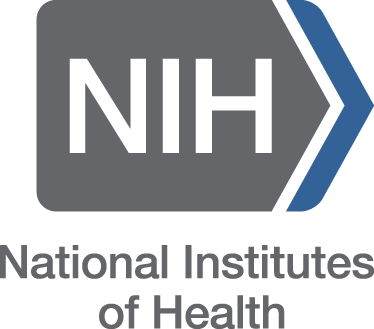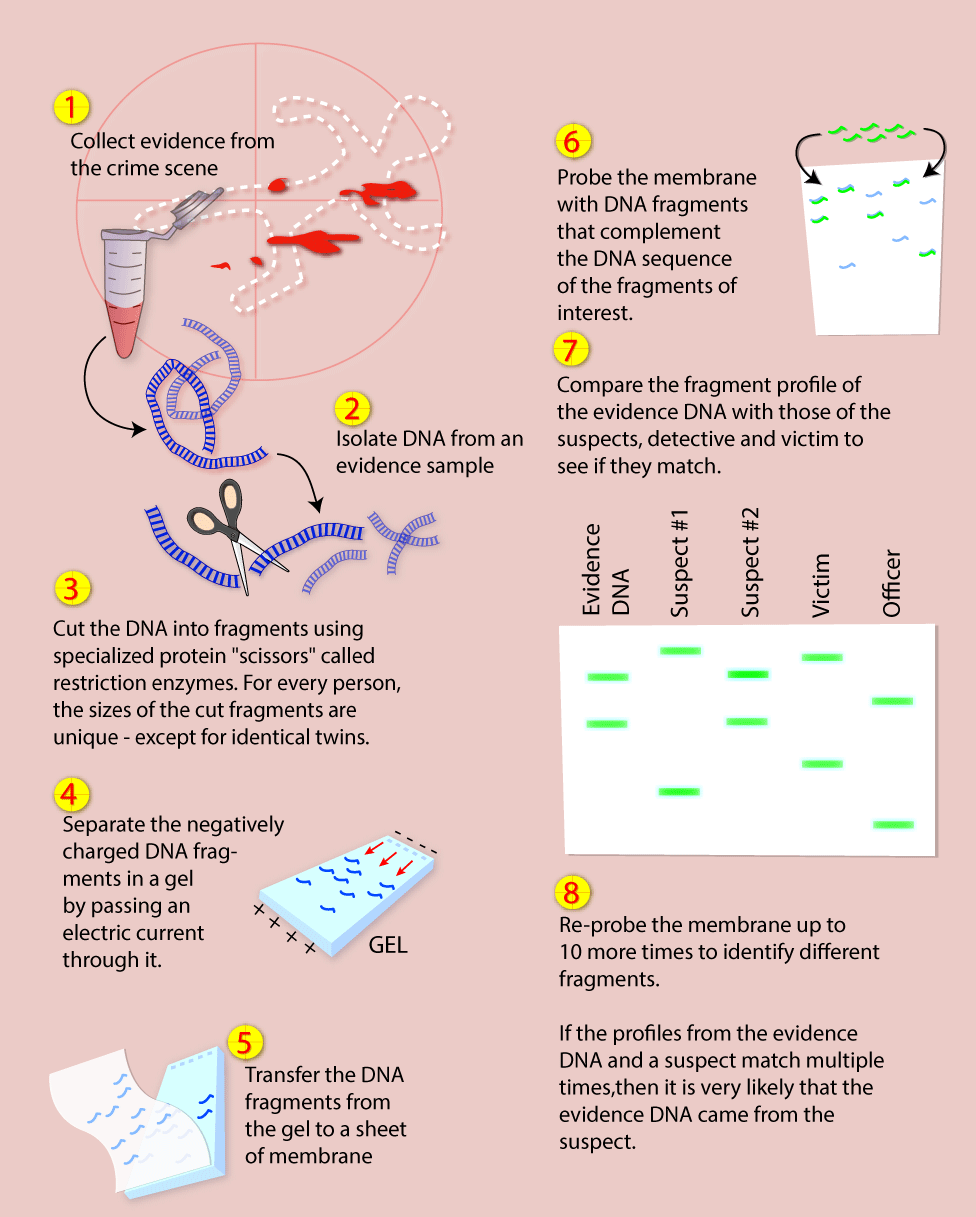Forensic Medicine
Discover NIH
 The National Institutes of Health (NIH), a part of the U.S. Department of Health and Human Services, is the nation’s medical research agency — making important discoveries that improve health and save lives. NIH is made up of 27 Institutes and Centers, each with a specific research agenda, often focusing on particular diseases or body systems.
The National Institutes of Health (NIH), a part of the U.S. Department of Health and Human Services, is the nation’s medical research agency — making important discoveries that improve health and save lives. NIH is made up of 27 Institutes and Centers, each with a specific research agenda, often focusing on particular diseases or body systems.
The National Human Genome Research Institute is establishing more robust methods for DNA-based forensic analyses. As new, more powerful technologies for amplifying and sequencing tiny amounts of DNA became available [see DNA Sequencing], scientists teamed up with law enforcement officials to improve the use of DNA analyses for crime solving. In the United States, the Federal Bureau of Investigation created the Combined DNA Index System (CODIS) in 1990. Today, a CODIS forensic profile combines information from analyzing 20 different STRs across the human genome. In theory, the combined data generated for this panel is specific enough to identify one person on earth. (Source: Enhanced Forensics)
The NLM Collections Tour: Forensic Medicine is a virtual tour of the historical collections of the National Library of Medicine (NLM). These collections document the history of forensic medicine and the different branches within the field. They highlight the fields of toxicology, pathology, anthropology, and DNA. Each are related to forensic medicine in a different way, but the application of each helps with investigations of a crime in establishing the causes of injury or death.

Discover Forensic Science
Pathology
American Academy of Forensic Sciences is a multidisciplinary professional organization that provides leadership to advance science and its application to the legal system. A forensic autopsy is an examination conducted postmortem to address medicolegal objectives to aid in the understanding of the cause of death in cases of homicide, suicide, and accidental death. (Source: NCBI | Forensic Autopsy) Tissues and blood samples will be removed to produce a pathology report written by a pathologist, a doctor who has special training in identifying diseases by studying cells and tissues under a microscope. Source: National Cancer Institute | Surgical Pathology Reports.
Toxicology
A Toxicology screen refers to various tests that determine the type and approximate amount of legal and illegal drugs a person has taken by measuring how much is in their blood, urine, or other bodily fluid. Source: MedlinePlus.gov | Medical Encyclopedia
DNA Analysis

In its early days, DNA analysis required an evidence sample at least the size of a dime. Today's techniques can amplify the DNA using PCR, making millions of copies from tiny amounts of evidence, such as the saliva from a cigarette butt. This approach is also helpful for analyzing poor-quality DNA in evidence samples collected from dirty crime scenes or in very old samples.
Blood relatives have more similar DNA
Unrelated individuals have three million DNA bases that differ between them, but blood relatives have fewer differences. If the DNA profile from a piece of evidence is similar—but not identical—to that of a suspect, officials may investigate blood relatives of the suspect.
What about human error?
Forensic investigators take many precautions to prevent mistakes, but human error can never be eliminated. The National Research Council (NRC) recommends that evidence samples be divided soon after they're collected, so that if a mix-up were to occur, there would be backup samples to analyze.
To detect possible contamination of DNA samples during collection or handling, evidence DNA profiles are typically compared with those from detectives at the crime scene, the victim, a randomly chosen person, or a DNA profile from a database. Each sample is assigned a code, and testers don't know who the samples came from.
The NRC recommends that forensic DNA analysis be conducted by an unbiased outside laboratory that maintains a high level of quality control and a low error rate.
Image: Restriction fragment length polymorphism (RFLP), shown above, is an older DNA-profiling technique. It has largely been replaced by PCR amplification of repetitive DNA segments that vary in length among individuals.
Reproduced from Learn.Genetics as of September 9, 2024
Anthropology
The American Board of Forensic Anthropology is comprised of forensic anthropologists who use their knowledge of the human skeleton, archaeological methods, and the decomposition process to determine if human or nonhuman remains have medicolegal significance.
Public Broadcasting Station (PBS) History Detectives Special Investigations series provides educational information for Forensic Anthropology.
The Smithsonian National Museum of Natural History has a virtual education resource, Forensic Anthropology.
Featured Books
-
Title: All That RemainsPublisher Arcade PublishingYear published 2020Book image

-
Title: StiffPublisher W W Norton & CoYear published 2021Book image

-
Title: What the Dead KnowPublisher Simon & SchusterYear published 2023Book image

Terms of use: Network of the National Library of Medicine (NNLM) staff offer these health discussion resources for educational use. The materials included do not necessarily reflect the views or opinions of the author, publisher, or the sponsoring agencies of the National Library of Medicine (NLM) and the National Institutes of Health (NIH).

